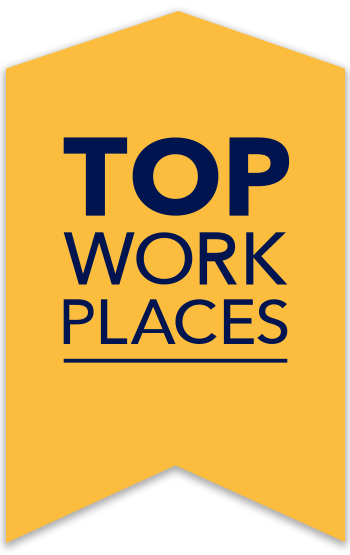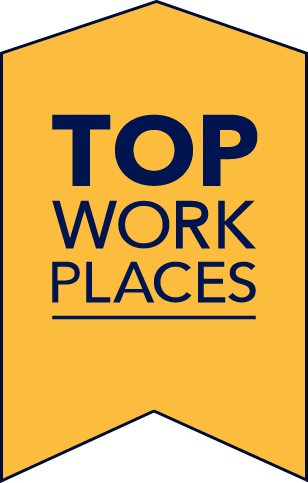Energage data reveals how the last two years have been a roller-coaster ride
for people’s relationships with work
The COVID pandemic prompted people to give more of themselves to their work in the spring of 2020, but 2021 was the year workers decided to focus more on what they wanted or needed for themselves. That’s evident in the employee engagement survey responses analyzed by Energage, which gathers feedback from workers
nationwide, year-round.
Call 2021 the year of reflection. “People were asking, ‘Is this really what I want to be doing with my life?’” said Lisa Black, director of data science at Energage. Data collected from more than 2 million workers in 2021 showed that people were less engaged in their work than a year earlier. Engagement looks at a combination of motivation, loyalty to the workplace, and how likely people are to recommend their workplace to others. Energage research revealed:
- Employee engagement dropped to 62.9% in 2021 compared with 65.3% in 2020.
- Employee engagement bottomed out at 60.3% in September/October 2021 before rising to 62.8% in December. But that end-of-year rate was still far lower than when the pandemic began; engagement peaked at 70.6% in April 2020.
- Employees showed a steady decline in loyalty – that is, employees who say they were not looking for work elsewhere – throughout 2021. By year’s end, it picked up slightly, ending at 66.8%. One year earlier, it was at 71.7%. Loyalty peaked at 74.4% in April 2020.
- For the second half of 2021 vs. the second half of 2020, employee loyalty dropped the most of all factors surveyed.
- Referral – employees who say they would recommend their workplace to others – peaked at 88.6% in April 2020 and bottomed out at 81.8% in September 2021. Like loyalty, referral showed a steady decline throughout 2021 but picked up at the end of the year.
- Employee motivation dropped, too, in 2021. Measuring 86.5% in December 2020, it went on a steady slide through September 2021, falling to 83.3%, before rising in Q4 2021.
Employees were committed initially, now seeking workplace flexibility
The first half of 2020 reflected uncertainty in the job market when the pandemic hit and some companies started layoffs. It was risky to look elsewhere, and people wanted psychological safety. “People were happy to have a job,” Black said. “The workplace is something predictable.”
In 2021, many employees decided that if their employers were calling them back to the office, they didn’t want to commute anymore, or they didn’t want to give up the flexibility of working from home, Black said. Those who enjoyed that flexibility became used to it.
But this doesn’t mean people gave up on their jobs in 2021. It just means they were less positive about their employment situation when compared to the first wave of the pandemic. Employee engagement in 2021 was greater than in 2015 to 2019.
Employees felt more included in 2021 but less informed
One area that employees were more positive about in 2021 was inclusiveness. Employees felt more included in what was going on (even if they weren’t necessarily happy about it).
People are more mindful, empathetic, and trying harder to make sure voices are heard, Black said. There’s also a greater focus on diversity, equity, and inclusion. “We’ve figured out how to work better together,” she said.
Still, although inclusiveness was up, employees said they felt slightly less clued-in than before. Black’s takeaway: Two-way communication still needs some work. “Just because you are included doesn’t mean you’re informed,” she said.
Have you asked your employees for their feedback? Survey your people when your company participates in Top Workplaces, the employer recognition program that offers awards in 60+ regional markets as well as national awards for culture and industry excellence.

 Stand out with an award-winning
Stand out with an award-winning